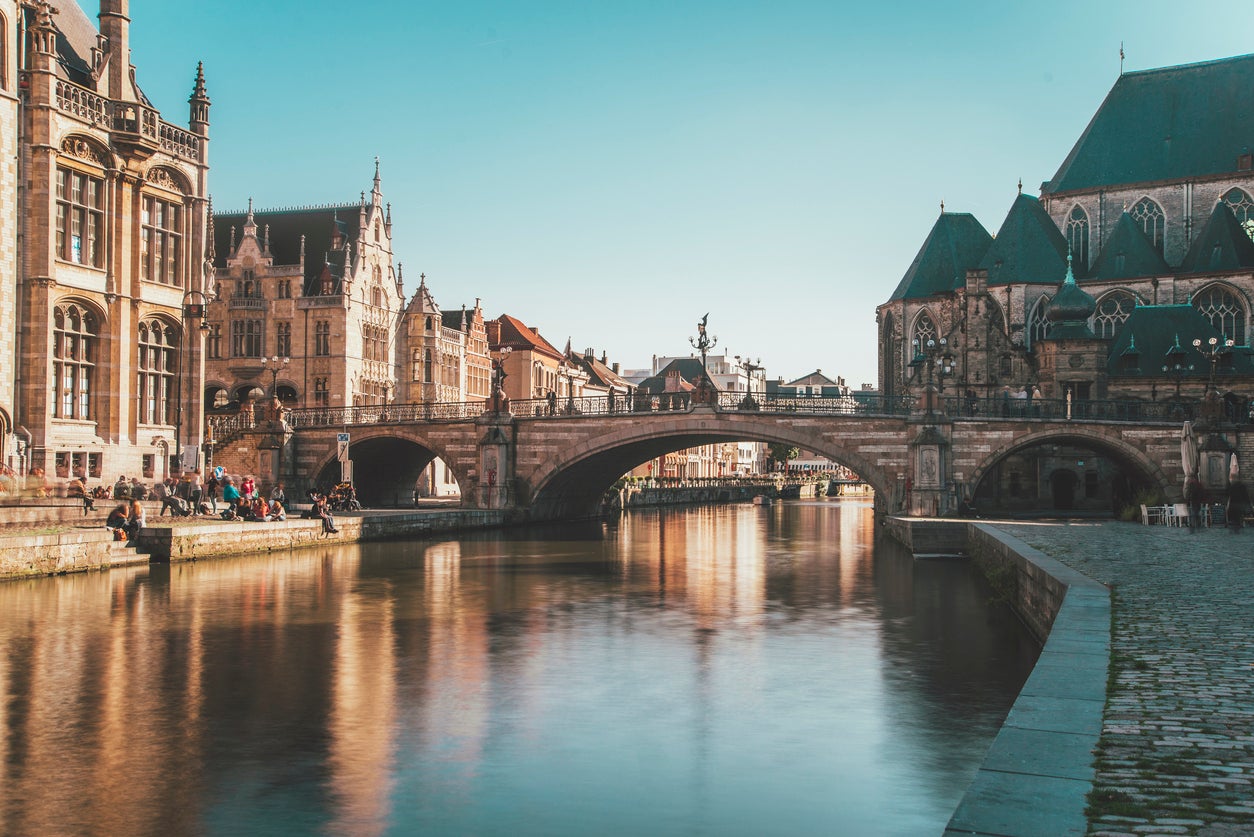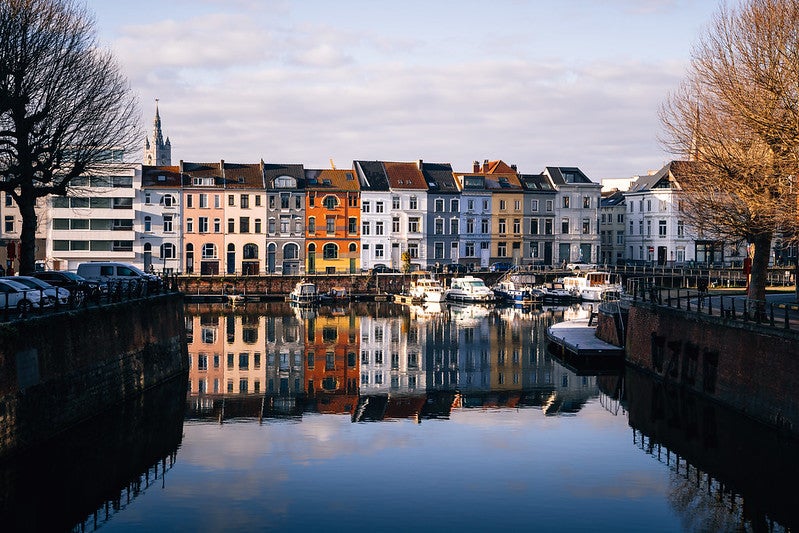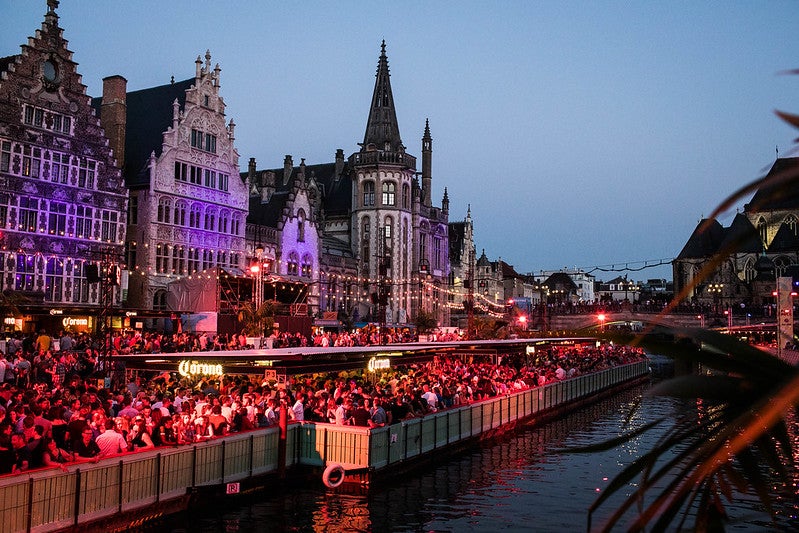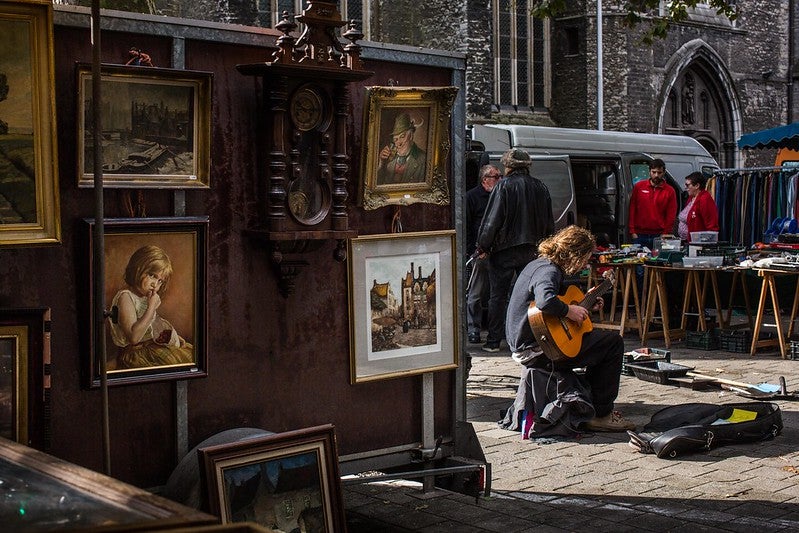The Independent's journalism is supported by our readers. When you purchase through links on our site, we may earn commission.
Ghent city guide: where to eat, drink and stay in Belgium’s underrated, veggie-friendly city
There’s more to Ghent than beer and bicycles: this curious, creative corner of Belgium is a fine example of what a modern metropolis can achieve when new ideas are allowed to flourish, says Anna Prendergast


Your support helps us to tell the story
From reproductive rights to climate change to Big Tech, The Independent is on the ground when the story is developing. Whether it's investigating the financials of Elon Musk's pro-Trump PAC or producing our latest documentary, 'The A Word', which shines a light on the American women fighting for reproductive rights, we know how important it is to parse out the facts from the messaging.
At such a critical moment in US history, we need reporters on the ground. Your donation allows us to keep sending journalists to speak to both sides of the story.
The Independent is trusted by Americans across the entire political spectrum. And unlike many other quality news outlets, we choose not to lock Americans out of our reporting and analysis with paywalls. We believe quality journalism should be available to everyone, paid for by those who can afford it.
Your support makes all the difference.A recent shift in the way we see the world means conscious travellers are more likely than ever to pass up capitals and even second cities – for all their allure – in favour of less tourist-trodden and more sustainable spots, or charming towns you can reach without flying. In Belgium, Ghent scores the hat-trick by being sibling to more-trodden Brussels and Antwerp, being less than three hours by train from London, and having a centre that’s been car-free since 2017 - making it a thoroughly modern break for 2022.
The River Leie splits the city like a wishbone just beyond St Michael’s Bridge, where the canals converge at the centre of town. From here, you can find historic architecture beside cutting-edge restaurants, centuries-old buildings filled with boutique bedrooms and a youth-led movement that has seen much of the city turn to cycling, vegetarianism and sustainable living. Ghent has even earned the title of European Youth Capital for 2024.

Things to do
On hearing that Ghent derives from the Celtic word “ganda”, I immediately pictured having a nosy around. In fact, the word means “river mouth”, but my mistaken interpretation makes just as much sense: this is a city best seen on foot, with sights easy to stumble upon. Wander along the riverbank, where gentenaars (Ghent locals) gather in summer and the reflection of fairy lights shimmers in winter, and you’ll spot Gravensteen castle (which was once occupied by students protesting the rise of beer prices) mirrored in the water.
Make the protesters proud by joining a tour with Beer Secret. For less than €40 (£34), you’ll learn about local beers, traditional brewing techniques and the community culture that surrounds it. Catch a live folk band playing the balalaika in Groentenmarkt, next to the mustard specialist Tierenteyn-Verlent (whose secret ingredient is highly sought after) and a stand selling cuberdons (“noses”, a cone-shaped gelatinous candy).
Where to eat
Friday and Saturday nights in Ghent book up quickly. You’ll find the city streets surprisingly quiet because everyone is at their favourite speakeasy, brewery or supper club, so booking ahead is essential. But if you’re reading this with a rumbling stomach and no reservations, try De Parkiet for a last-minute table, a welcoming space with an informal atmosphere serving ice-cold aperitif and local cheese at exceptionally good prices (beers start at €2.50).
Every Thursday is “vegetarian day” in plant-based paradise Ghent, but meat-free diets are well catered for all year round. Michelin-tipped Naturell is run by Lieven Lootens who hosts a “dinner with the queen” event every summer to protect and pay tribute to the bees and flowers that supply his kitchen with fresh, foraged ingredients. Meanwhile, lunch at low-key Le Botaniste consists of bright bowls of seasonal soups and spiced stews. On Saturdays, pick up freshly baked bread and pastries at De Superette.

Where to drink
By day, Ray hosts vintage clothes markets and exhibitions, but as dusk descends, local DJs take to the decks and one can’t help but be drawn to the neon lights of the giant glasshouse, set beneath the gothic spires of St Nicholas church. Opposite, you might have to queue for a seat at The Cobbler, a clandestine cocktail bar hidden in the fabulous 1898 The Post hotel. Charming bartenders shake up original recipes such as the tequila-based Cafuné (which, rather romantically, translates as “the sudden urge to caress a loved one’s hair”), made with lemon verbena, apple, honey and red wine.
Over the river, Jiggers (jiggers.be) is an award-winning speakeasy that has just secured its own farm, where it’s experimenting with ingredients. The grungy-but-great jenever cafe ’t Dreupelkot may be the only bar in Belgium that doesn’t serve a single beer, but it has every spirit under the sun – including the famous Dutch gin – and is right on the riverbank.

Where to stay
For a deep sleep, 1898 The Post has a handful of hushed bedrooms in a listed building with narrow corridors, industrial steel arches and an unparalleled riverside location in Graslei. Giant beds rest easy beneath sky-high ceilings, from which hang swooping curtains that reveal views of the waterways below. At weekends, breakfast hours are informally extended to allow for lie-ins.
In the arts district, The Verhaegen is an opulent bed and breakfast run by the stylish Jan Rosseel and his partner Marc Vergauwe. Think Versailles in miniature, with modern flourishes: it’s wall-to-wall with original features from art panels to gilded stuccoes. “We believe in bringing happiness into the every day, rather than saving it for special occasions,” says Jan.
Where to shop
Old and new exist in harmony on these cobbled streets. One minute you’ll stumble upon a Japanese manga store (Muchwow) and moments later you’ll smell sugar in the air at a family-run business that’s been selling gingerbread since 1904 (Temmerman Confiserie).
Kouter’s weekend flower market is a laidback affair – sometimes it happens, sometimes it doesn’t – and on every corner is an antiques shop. Pick up witty postcards (packaged in 19th-century paper coffee bags) and vintage interiors magazines at Het Tijdreisbureau, and follow bargain-hunting gentenaars to the second-hand stalls at Sint-Jacob’s Prondelmarkt. Dille & Kamille is an unmissable homewares store with a collection of artisanal European trinkets, and nowhere does local delicacy gestreken mastellen quite like Julie’s House. Go early – they sell out fast.

Nuts and bolts
What currency do they use?
Euros.
What language do they speak?
Dutch, but most are fluent in English.
How much should I tip?
Tipping is not required on top of the typical inbuilt service charge.
What’s the time difference?
Belgium is one hour ahead of the UK.
How should I get around?
Walk or cycle.
What’s the best view?
The one from Saint Michael’s bridge.
Insider tip?
Want to try a lot of Belgian brews and bites under one roof? Head for Hal 16, a food hall in an old warehouse by the city’s port.
Getting there
Trying to fly less?
Take the Eurostar to Brussels, then take a Belgian Railways train onwards to Ghent’s Gand-Saint-Pierre. Or drive through France and into Belgium using the Eurotunnel (this is currently off-limits due to France’s travel ban on UK visitors).
Fine with flying?
The nearest airports are Brussels and Rotterdam.
Join our commenting forum
Join thought-provoking conversations, follow other Independent readers and see their replies
Comments